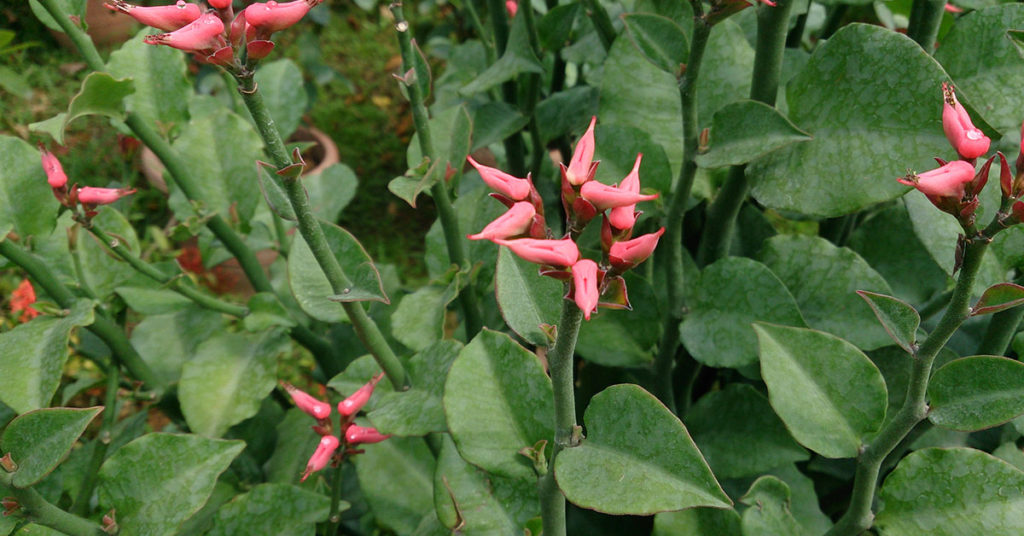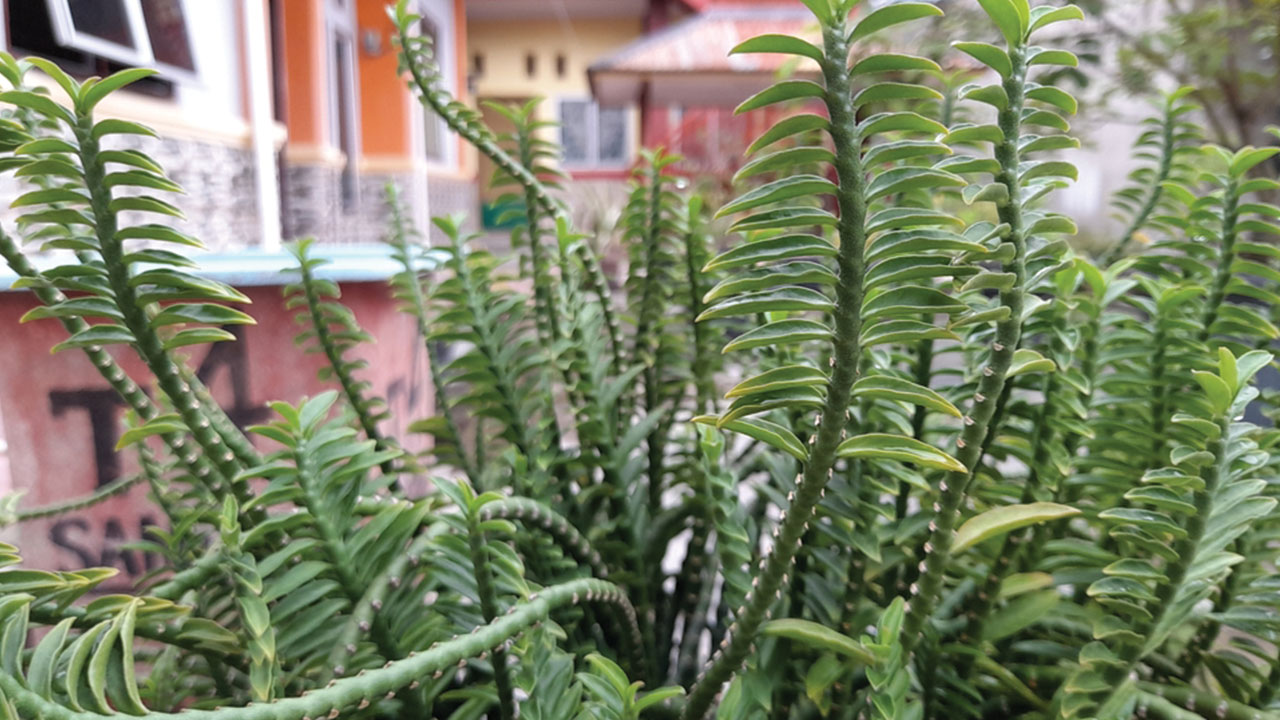I have a love of indoor houseplants, as you might guess. One of my favorite plants (and let’s face it, they’re kind of all my favorite plants) is the devil’s backbone plant. This simple but elegant plant hails from warm, tropical parts of North America and is a solid addition to an indoor botanical garden of any size.
What is the devil’s backbone plant
This plant is one of my favorites to grow indoors just because it is easy and no-fuss. It’s a pretty unique-looking plant too, not really being seen growing in very many homes. Some fast facts:
- Latin name: Pedilanthus tithymaloides
- Other names: red bird flower, Persian lady slipper, Japanese poinsettia, rick rack plant, and Jacob’s ladder
- Native to: Warm parts of North America including Central America and Florida.
- Invasiveness: Yes
- Tenderness: Perennial
- Sun: Bright, indirect sunlight
- Water: Keep soil moist
- Soil: Houseplant potting soil
- Hardiness zone: 9-10
- Plant height: 2 feet
- Bloom period: Summer
- Container friendly: Yes
- Fertilizer: General tropical plant fertilizer
- Toxicity: Skin irritant and toxic to pets
- Drought tolerant: Somewhat
- Frost tolerance: Mild
- Pest resistant: Susceptible to spider mites
How to care for devil’s backbone plant

The devil’s backbone plant, Pedilanthus tithymaloides, is a solid plant for any indoor garden and can survive outdoors in hardiness zones warmer than zone 9a. It is native to warmer parts of North America, including Florida and Central America, but isn’t known to be invasive outside of its native range. It prefers to be planted in standard houseplant potting soil that’s kept moist. It doesn’t like direct sun, but will grow well in bright, indirect sun.
This plant gets fairly tall, up to 2 feet, and blooms in the summer. Watch out, though, because the devil’s backbone plant can be toxic to pets, specifically dogs. It produces small red and pink flowers in the summer.
The devil’s backbone plant is considered invasive outside of its native range, can tolerate only very mild (not hard) frosts, and is susceptible to spider mites, especially when grown indoors. It can tolerate some periods of dry weather, but it really isn’t drought tolerant. It prefers to have regular waterings.
Water
The devil’s backbone plant doesn’t necessarily like being waterlogged or soggy, but it does appreciate frequent waterings. Water when you notice the top layer of soil has become dry. Don’t allow the plant to set in standing water for too long. It is a tropical plant, so a bit of humidity goes a long way.
Sunlight
Pedilanthus tithymaloides doesn’t really care too much for direct sunlight, especially in the summer. You can provide it with more direct sunlight during fall and winter, but protect it from the midday summer sun. Your plant will thrive in bright, indirect sunlight.
Soil
Standard houseplant potting soil is more than sufficient for this no-fuss houseplant. You don’t have to go too fancy for this one. It will appreciate just about any substrate you give it.
Fertilizing
The devil’s backbone plant will thrive in standard potting soil and will feed off of the ample nutrients contained in that soil, but occasional fertilizing with tropical plant fertilizer will help it continue to thrive as it depletes soil nutrients. Up pot your plant if it seems to be getting too large or isn’t quite thriving.
Invasiveness
According to the Invasive Species Copendium, devil’s backbone is considered invasive in Spain, South Africa, Australia, Venezuela, and New Caledonia. It should only be planted outdoors where it is native, which is in Central America, Mexico, and Florida.
Growing devil’s backbone plant in containers
This is one of those plants that does exceptionally well kept in pots indoors. It’s definitely container friendly! Just use a high-quality indoor plant potting soil and fertilize periodically with tropical plant fertilizer. You can move your devil’s backbone plant outdoors during the summer but keep your plant away from direct afternoon sunlight.
Common problems
The devil’s backbone plant is hardy and rarely has issues with pests or disease. It can sometimes become infested with spider mites, which will appear like tiny white mites that spin very thin webbing on the plant. The biggest problem with this plant is its potential toxicity. The milky sap-like substance inside of the plant can be a skin irritant and toxic to pets.
Propagating devil’s backbone plant
You can propagate this plant from cuttings in the springtime. Wait until new growth appears and then cut from that new growth. Remove several leaves toward the base of the stem. Allow the cutting’s cut portion to dry and then apply rooting hormone. Your cutting can go directly into the soil. Plant in a 3-inch pot with indoor potting soil. It’s a very simple process that has a high rate of success.
Uses for devil’s backbone plant
The devil’s backbone plant has no known uses, culinary or medicinal, and is known to be toxic to pets. Don’t try eating it and don’t feed it to your pets!
In general, the devil’s backbone plant is one of those that I always like to keep in my house. Its ease of growth and care makes it ideal. Just keep it away from kids and pets and watch out for those spider mites!













